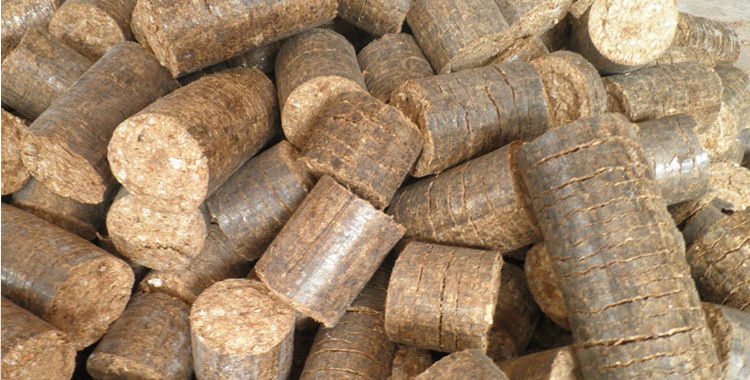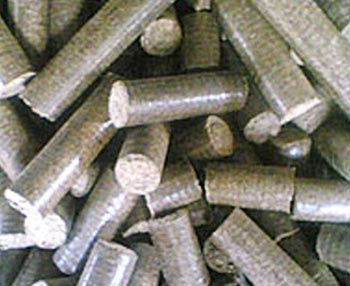PRODUCT DETAILS
INTRODUCTION
Biomass is material derived from recently living organisms, which includes plants, animals and their byproducts. Manure, garden waste, forest waste and crop residues are all sources of biomass. It is a renewable energy source based on the carbon cycle, unlike other natural resources such as petroleum, coal, and nuclear fuels.
Examples of biodegradable wastes include Rice Husk, Coffee Husk, Coir Pitch, Jute Sticks, Sugarcane Bagasse, Groundnut Shell, Mustard Stalks, Cotton Stalks, Sawdust, Caster Seed Shells / Stalk, Wood Chips, Bamboo Dust, Tobacco Waste, Tea Waste, Paddy Straw, Wheat Straw, Sunflower Stalk, Palm Husk, Soya-bean Husk, Veneer Residues, Barks & Straws, Forestry waste, Seeds Cases etc.
The use of biomass fuels can therefore contribute to waste management as well as fuel security and help to prevent or slow down climate change, although alone they are not a comprehensive solution to these problems.
The Biomass Briquettes are eco-friendly and renewable energy in our Country. With a high average heating capacity of around 4000 K. Cal per tone and high thermal variability, it is proving to be a great success in some parts of the country as a pure substitute to coal.
Briquettes have high specific density (1200 Kg/m3) and bulk density (800 Kg/m3) compared to 60 to 180 Kg/m3 of loose biomass. These can withstand the stocks of long distance transport, Loading/unloading and transportation costs are much less, and storage requirement is drastically reduced. Compared to fire wood or loose biomass, briquettes give much higher boiler efficiency because of low moisture and higher density.
BIO-MASS BRIQUETTE
Introduction
Biomass briquetting is the densification of loose biomass material to produce compact solid composites of different sizes with the application of pressure. Briquetting of residues takes place with the application of pressure, heat and binding agent on the loose materials to produce the briquettes.
Following are the advantages of briquette
•This is one of the alternative methods to save the consumption and dependency on
fuel wood.
•Densities fuels are easy to ha
ndle, transport and store.
•They are uniform in size and quality.
•The process helps to solve the residual disposal problem.
•The process assists the reduction of
fuel wood and deforestation.
•Indoor air pollution is minimized.
Two different types of densification technologies are currently in use. The first, called pyrolizing technology relies on partial pyrolysis of biomass, which is mixed with binder and then made into briquettes by casting and pressing. The second technology is direct extrusion type, where the biomass is dried and directly compacted with high heat and pressure. Setting up the briquette production unit raw material should be locally available. The raw materials for biomass briquetting can be:
•Agricultural residues (husks, cob, stalks, leaves, stems, shells, sticks)
•Invasive plants (Banmara, Lantana camera, Euphorbia royalena, Congress grass)
•Waste from bio-product industries like sawmills, plywood industries, furniture factories.
Briquettes a promising fuel
Briquettes produced from briquetting of biomass are fairly good substitute for coal, lignite, firewood and offer numerous advantages:
•Briquettes are cheaper than COAL, OIL or LIGNITE once used cannot be replaced.
•There is no sulfur in briquettes.
•There is no fly ash when burning briquettes.
•Briquettes have a consistent quality, have high burning efficiency, and are ideally sized for complete combustion.
Combustion is more uniform compared to coal.
•Unlike coal, lignite or oil, briquettes are produced from renewable source of energy, biomass.
•Loading/unloading and transportation costs are much less and storage requirement is drastically reduced.
•Briquettes are clean to handle & can be packed in bags for ease of handling & storage.
•Briquettes are usually produced near the consumption centers and supplies do not depend on erratic transport from long distances.
•The technology is pollution free and Eco-friendly.
•The briquette is easy to ignite.
•Continuous burning and Long burning duration.
Functions / Application
The briquettes can be used for domestic purposes (cooking, heating, barbequing) and industrial purposes (agro-industries, food processing) in both rural andurban areas. The briquetting technology available at MGIRI
1. Manual operated (Bee Hive form)
2. Machine Operated (extruder machine)
1. Manual operated (Bee Hive Briquette)
Beehive briquetting is produced from pyrolizing technology. The briquette producedis around 5.5 inch in diameter and height is around 3.5 inch. The briquette has around 19 holes of diameter 0.5 inches which facilitates the proper combustion. Since the briquette has the shape of bee-hive hence the name beehive briquette.
Machine operated–The developed machine is screwpress type. The diameter of the briquette is closely related to the output of the machine. In this process pallets of briquette produce around 0.5 to 2,0 inch diameter and length 1.0 to 4.0 inch. In the screwpresses, material is fed continuously into a screw which forces the material into a cylindrical die.
Specification
Calorific value: 16 to 20 MJ/Kg
Binder Material: tamarind seed powder
Binder composition: 10-15%




Biomass Briquetting is the process of converting low bulk density biomass into high density and energy concentrated fuel briquettes. Biomass Briquetting plants are of various sizes which converts biomass into solid fuels. Briquettes are ready substitute of Coal/wood in industrial boiler and brick kiln for thermal application

DESIGNING
Millions of tones of residues from agriculture as well as forestry goes as a waste on annual basis and is growing with growth in agriculture. The same can be used for burning and hence produce heat- The base foundation of a source of energy. If the same waste can rather become a material to contribute to the economy, the growth story is bound to happen.

INSPIRATION




